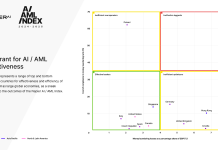Luxury goods encompass high-end items associated with prestige and significant monetary value. In the context of financial crime, luxury goods such as watches, cars, jewellery, yachts, and art are often targeted by money launderers.
According to Moody’s, these items can serve as relatively easily acquired and transferable assets, useful for the placement, layering, and integration stages of money laundering schemes.
The allure of luxury goods lies in their physical portability and potential for resale in secondary markets, making them attractive tools for criminals seeking to legitimise illicit proceeds through legitimate transactions. Luxury goods are often moved across borders, sometimes using free ports or special economic zones where customs regulations are less stringent. This mobility helps obscure ownership and value.
The lack of specific job titles dedicated to addressing money laundering risks in the luxury goods market poses challenges for businesses operating in this sector. Despite the attention luxury goods receive in media reports on financial crime, there is a notable absence of dedicated professionals with expertise in combating money laundering within the luxury market.
This gap underscores the importance of implementing robust controls and due diligence measures to mitigate risks associated with using luxury goods as vehicles for illicit financial activities. By understanding the unique vulnerabilities inherent in dealing with high-value items, businesses can proactively protect themselves from being unwittingly involved in money laundering schemes.
Regulatory requirements and compliance measures play a crucial role in mitigating the risks associated with luxury goods being implicated in financial crime. Businesses operating in the luxury goods sector must adhere to stringent regulations to prevent illicit activities such as money laundering and fraud.
Customer due diligence (CDD) is a fundamental aspect of regulatory compliance, requiring firms to verify the identity of customers purchasing high-value items and assess the source of funds used for such transactions. By conducting thorough due diligence, businesses can identify potential red flags associated with individuals and entities, thereby mitigating the risk of facilitating illicit financial crime involving their products.
In addition to CDD, businesses dealing with luxury goods are required to maintain detailed records of transactions and customer information for a minimum period of five years. Record-keeping is essential for ensuring transparency and accountability in financial transactions involving high-value items. By documenting and retaining relevant information, businesses can demonstrate compliance with regulatory requirements and provide authorities with necessary data in case of investigations into suspicious activities related to luxury goods.
Reporting suspicious activity is another key aspect of regulatory compliance. Firms must have robust mechanisms to identify and promptly report any unusual or potentially illicit transactions to relevant authorities. Training staff members on recognising red flags and implementing controls tailored to the risks associated with luxury goods transactions is essential for ensuring effective compliance and safeguarding against potential money laundering or fraud schemes.
Individual consumers can also be at risk of buying goods with an illicit history. They can protect themselves when buying luxury goods by taking proactive steps to ensure the legitimacy of purchases. A key strategy is to thoroughly research the marketplace or seller, checking for reviews, ratings, and any available information on their reputation. Verifying the authenticity of the product and asking for additional photos or documentation can help individuals confirm the legitimacy of an item before purchase.
Engaging with sellers directly and asking questions about the product, its history, and its source can provide further assurance of the item’s authenticity and legality.
Examining payment options and ensuring secure transactions is another important aspect of protecting oneself when buying luxury goods. Individuals should opt for reputable payment methods and platforms that offer buyer protection and secure payment processing. Avoiding cash transactions or deals that require meeting in person for exchange can help mitigate the risk of falling victim to fraudulent schemes or money laundering activities.
By being vigilant, conducting thorough due diligence on sellers and products, and choosing secure payment methods, individuals can reduce their exposure to potential financial crime risks when purchasing luxury goods.
Recommended resources to learn more about combating financial crime in the luxury goods industry include regulatory guidance notes provided by authorities such as HMRC, which offer insights into the requirements and best practices for businesses dealing with high-value items. Additionally, industry-specific publications and media outlets covering financial crime topics can provide valuable information and updates on trends and developments in the luxury goods sector.
Professional networks and forums related to financial crime and compliance may also offer opportunities to connect with experts and peers in the field, share insights, and stay informed about emerging issues and strategies for combating financial crime in the luxury goods industry.
Copyright © 2024 RegTech Analyst
Copyright © 2018 RegTech Analyst






